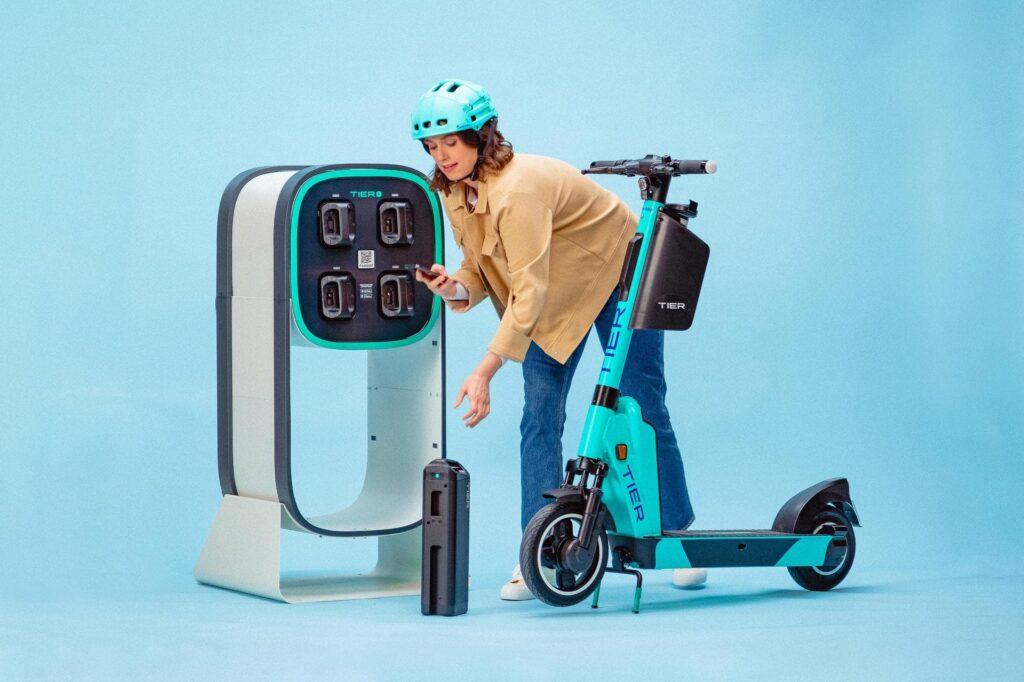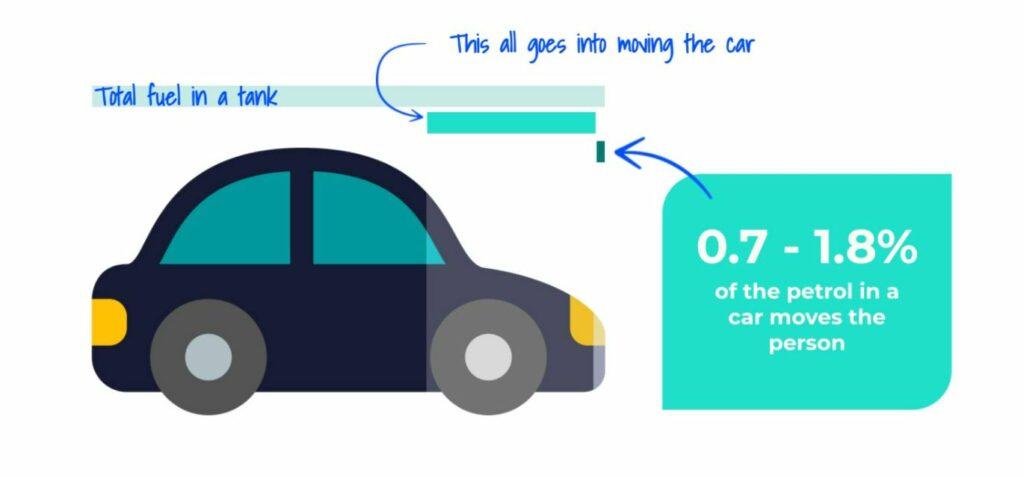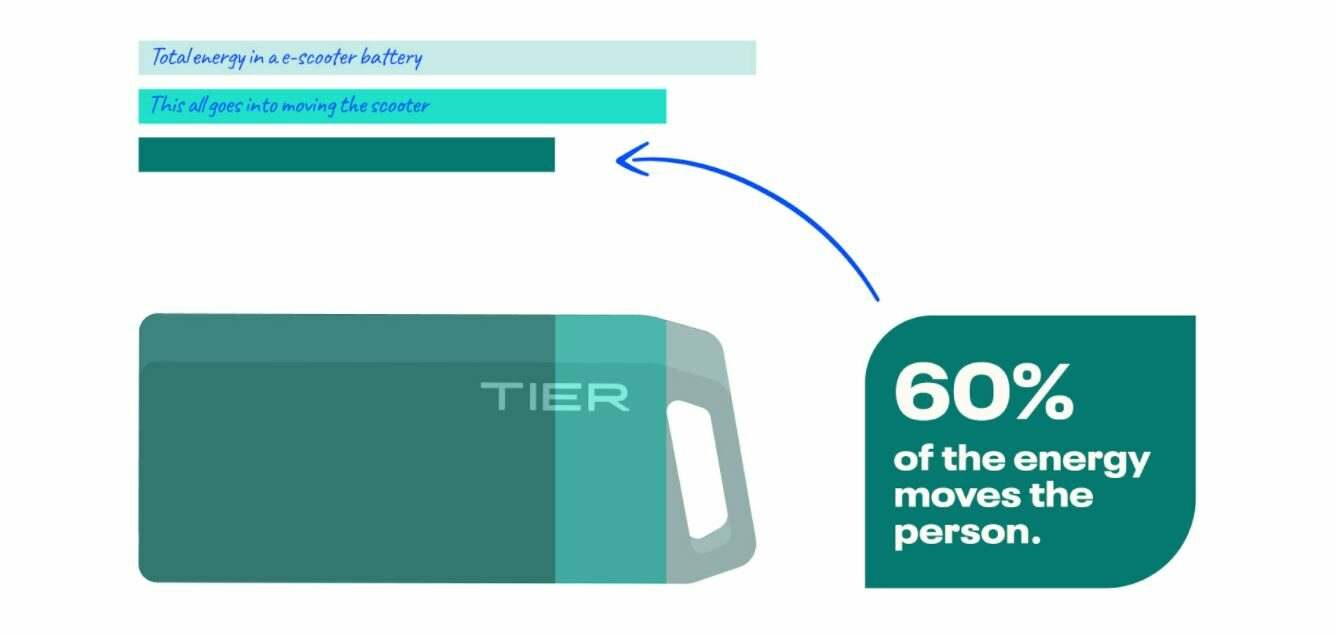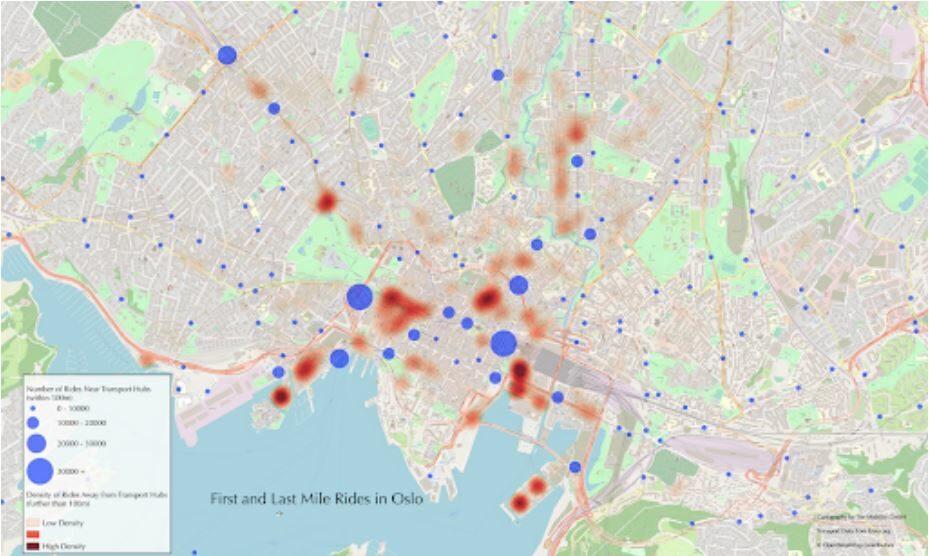Sustainability
Technology
Innovation in mobility: Building planet- and people-centric cities
May 16, 2022

Smart technologies can help us achieve a green transformation
The chances are, you have seen an e-scooter in your streets before. But when you see an e-scooter, what do you think?
Maybe your reaction is positive. Perhaps you see an e-scooter as a fun way to see a new city. A convenient commuting option. But maybe your reaction is not so positive. Perhaps you see e-scooters as a nuisance. An unwelcome hazard littering your streets and invading your public space.
Whatever your opinion, we hope that by the time you have read this article, you will understand what TIER thinks when we see an e-scooter. Because we see potential.
In this article, we discuss how smart technologies like shared e-scooters can be leveraged to achieve a green transformation. The kind of transformation many of us envisage and hope for our cities.
So the next time you see an e-scooter, we hope you will also see it as a sign of the progress our cities are making. We hope you will see the potential for us to harness smart innovations to drive a planet- and people-centric urban future.
TIER’s mission
Our mission is to change mobility for good, and our ambition is to leverage smart technologies to achieve that. That means we do not innovate for innovation’s sake. We invest in high impact technologies that help our partner cities tackle their problems and achieve their goals.
Let’s refresh ourselves on some of the biggest challenges we are up against.
Congestion
People spend a lot of time in traffic. On average, motorists in Paris spend 65 hours a year stuck in traffic. In London, that number is 73 hours.
Air pollution
The European Environment Agency believes that air pollution represents the single largest environmental health risk to human health in Europe today.
Energy consumption
Cities account for two-thirds of global energy consumption and more than 70% of annual global carbon emissions. Across the EU, the transport sector accounts for approximately 31.7% of total final energy consumption.
Reclaiming our streets
Research shows that around 50% of Stockholm is allocated to car parking and roads. This is similar across other European cities.
To help cities solve these problems, TIER invests in and deploys smart technologies that will achieve the following three objectives:
- Reduce reliance on private cars to make our transport networks more energy efficient.
- Build a mobility network that efficiently accommodates a growing population.
- Democratise public space and services to make our cities better places to live.
Objective 1: Reduce private car dependency to make our transport networks more energy efficient
What’s the problem?
We consume too much energy. We simply lack sufficient amounts of low carbon, cheap, large-scale energy alternatives to fossil fuels to meet our demand. The fossil fuels we use to meet this demand produce high levels of greenhouse gas emissions, causing many of the environmental issues we are all familiar with.
To reduce energy demand in cities, we must strive to eliminate our most inefficient uses of energy.
One glaring inefficiency is our overdependence on private internal combustion engine cars. Only a very small fraction of the energy from the fuel put into the car is used to move the driver.

Only 12%-30% of the energy from the fuel is used to actually move the car. Of that 12-30%, 94% is used to move the 1,400kg car, and only 6% is used to move the 80kg driver. In a private car, only 0.7% - 1.8% of the energy is used to move the person. This is an exceedingly wasteful use of energy, with dire consequences for health, quality of life, and the environment.
The private car is the most dominant form of transport in the EU. That means the potential for putting a dent in our energy demand by reducing reliance on cars is huge. But how can smart innovations help us to achieve that?
How can innovation help us?
We can start by shifting from private cars to shared modes of electric transport.
Smaller, electric vehicles are significantly more energy efficient. Around 85% of the energy from the battery is used to actually move the vehicle. Of that 85%, 29% is used to move the 32kg scooter, and 71% is used to move the 80kg person. On a TIER e-scooter, approximately 60% of the energy is used to move the person. That is around 40 times more energy efficient than a fuel car.
This is TIER’s core service, as we provide citizens and cities with fleets of on-demand electric micromobility vehicles. To date, we have avoided 33 million car kilometres from being driven, and have avoided 5.4 million kgs of CO2 emissions.

Understanding that advanced battery innovation was fundamental to unlocking this energy efficiency, we developed an industry-leading energy solution called TIER Energy Network. This solution is a network of smart, IoT-based charging stations that are deployed across cities.
These charging stations empower our riders to replace depleted batteries for fully charged ones; in exchange for a discounted fare. Through this, we make clean, electric micromobility more affordable for riders, while using this smart charging technology to improve the energy efficiency of our service. By empowering riders to swap the batteries themselves, we dramatically reduce the kilometers travelled and CO2 emissions of our operations.

This is only the very beginning for this technology.
With a battery charging network distributed throughout the city, we can open up our network to individuals, logistics companies, food delivery companies, and other micromobility operators. This will enable the wider urban mobility sector to enjoy the same emission-cutting efficiencies.
What’s more, our Energy Network can be equipped with smart-charging features that communicate with the grid. These features would only charge the batteries when demand on the grid is low, and renewable energy supply is high. We are even exploring how our Energy Network can send electricity back to the grid when overall demand for energy in the city is high.
Objective 2: Build a mobility network that efficiently accommodates a growing population
What’s the problem?
Cities are extremely complex, dynamic organisms. It is estimated that up to five million journeys are made every single day in Barcelona alone. And as our city populations grow and mobility habits evolve, designing a transport network that efficiently accommodates the population growth and behavioural changes is becoming an increasingly difficult task.
How can innovation help us?
Public authorities are increasingly relying on data to understand their cities and make more informed decisions. For example, the data collected from millions of people tapping in and out of the tube every single day in London is routinely used to schedule network maintenance and expansion.
So how can we leverage smart technologies to help public authorities make more informed decisions? TIER has over 135,000 vehicles deployed in over 170 cities in 18 countries. Each of these vehicles is equipped with a unique ID and an IoT module containing the vehicle’s GPS module and numerous sensors. We collect a lot of vehicle, usage and mobility data.
By tapping into this data, we can better understand the mobility habits and needs in a city. We gain insights into the blockers and amplifiers of modal shift, CO2 emissions, public transport connectivity, and changing demand for mobility over time.
By analysing our data in Oslo, we reveal which public transport stations have the highest rate of intermodality between e-scooters and public transport. These insights help our local team in Oslo to optimise the availability and connectivity of our service. They also provide the city invaluable data to make more informed decisions and changes to the transport ecosystem in high demand areas.

We are also experimenting with camera vision technology through a six month industry-first trial in Dublin. With this technology, we are effectively giving our e-scooters ‘eyes’. By analysing the visual data from an e-scooter journey, we develop a detailed understanding of the urban environment. Cities can use this data to understand the conditions of their roads, the hotspots for congestion, and how public space is being used.
Armed with these local insights, we are empowered to make more informed, more localised decisions that are tailored for the unique needs of every city.
Objective 3: Democratising public space and services to make our cities better places to live
What’s the problem?
When we spend our time caught in the complexities of the technologies we are developing, it is easy to forget the simplicity and human element of the outcome we are trying to achieve. So when we think about sustainability, it is crucial to consider the social sustainability of the changes we are making to the space that people live in.
The importance of the quality of public space is well established. In a recent survey, 85% of people felt that the quality of public space and the built environment has a direct impact on their lives and the way they feel. So when we think about planet and people-centric cities, we have a social obligation to design cities, mobility ecosystems, and services like TIER’s based on what people actually want.
How can innovation help us?
The answer is quite simple. Leveraging the power of data and smart citizen engagement can help us understand and gather the perspectives of people, at scale. Both the public and private sector can take advantage of this.
For example, cities like Copenhagen are crowdsourcing insights into the demand for more public spaces in the city; through using citizen engagement platforms.
At TIER, we are starting to explore the potential of consulting citizens when designing and adapting our service. In collaboration with CitizenLab, a digital platform for participative democracy, we are piloting how to improve the accessibility and availability of TIER’s transport options in York, UK. The results of this engagement allow us, and the local transport authority, to better understand the specific mobility needs of local communities, and design a people-centric mobility system accordingly.
Such collaborations have revealed the enormous potential at the intersection between smart mobility innovations and urban planning. To further explore this, TIER has partnered with Gehl People in London. Together, we are analysing how Londoners interact with TIER’s shared micromobility service in the city. TIER, the London Boroughs, and Transport for London are using these insights to tailor our service to drive positive outcomes like modal shift (to more sustainable mobility modes) and people-centric urban design.
How can YOU use smart technologies to achieve a green transformation?
We know that innovation can be used to achieve our vision of planet- and people-centric cities. TIER lives and experiences it everyday. We have taken big bets on these technologies, and continue to make large investments in developing the high impact innovations that will deliver a sustainable future.
So when you next see an e-scooter, we invite you to think about the potential of technology and data to transform our cities.
Think about how you can adopt smart battery technologies to reduce your energy demand.
What data do you need to build a more efficient and people-centric city?
How can you involve local communities to make our cities a better place to live?
Because the more we think about how we can use smart technologies to achieve our sustainability goals, the better chance we have of achieving a transformation towards the planet- and people-centric cities we envision.